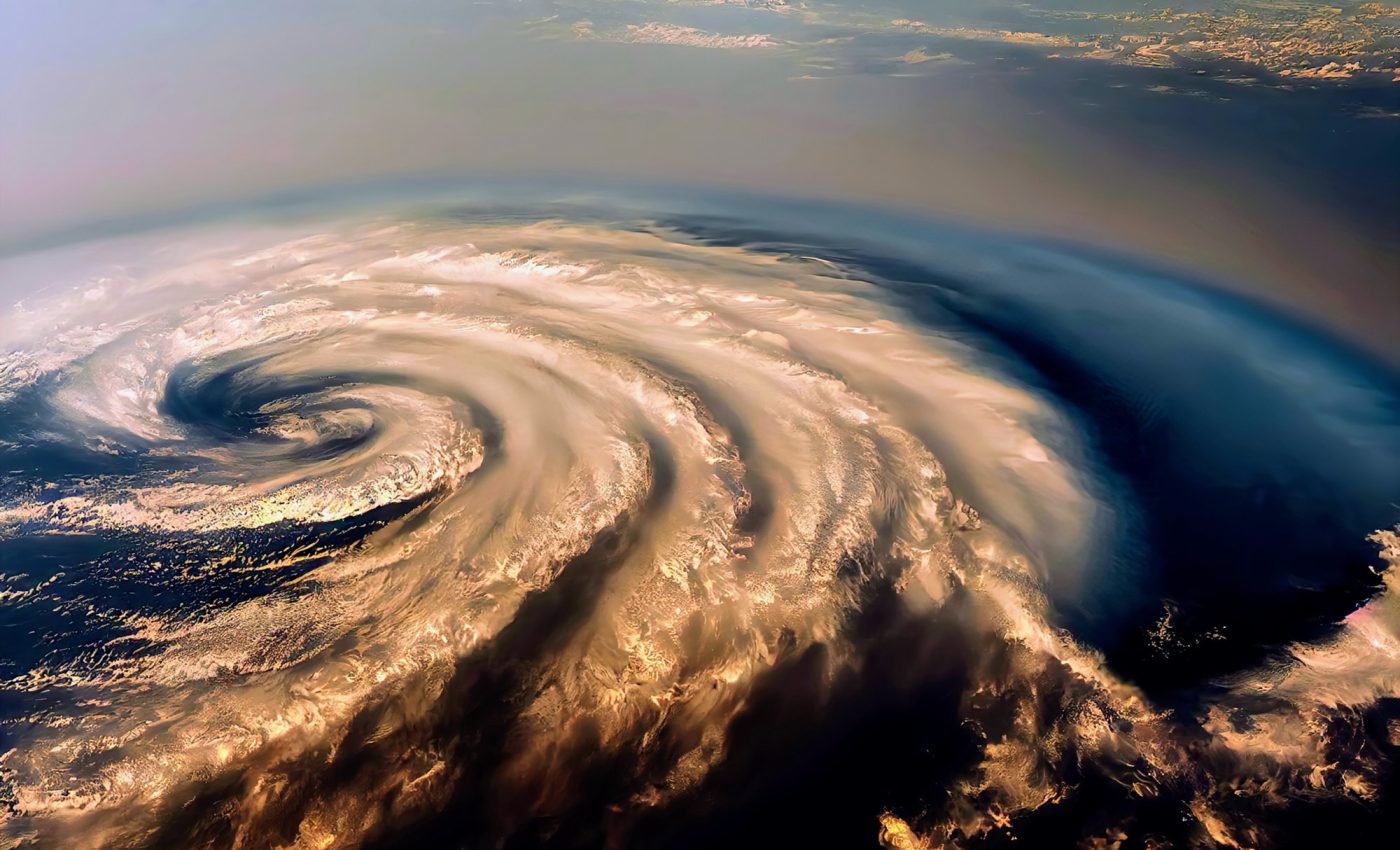
Saharan dust can intensify hurricanes
Giant plumes of Sahara Desert dust that blow across the Atlantic can influence weather patterns, suppressing the formation of hurricanes and affecting North American weather.
However, a new study published in the journal Science Advances has shown that thick dust plumes can also lead to heavier rainfall and more potential destruction from landfalling storms.
“Saharan dust, transported across the Atlantic Ocean by trade winds, is the predominant aerosol type during summer and early fall over the tropical Atlantic,” noted the researchers.
“It can efficiently alter atmospheric radiative fluxes in both shortwave and longwave bands and participate in cloud formation by serving as cloud condensation nuclei (CCN) and/or ice nuclei (IN).”
Saharan dust and hurricane precipitation
The study uncovered a previously unknown relationship between Saharan dust plumes and hurricane precipitation.
Study co-author Yuan Wang is an assistant professor of Earth system science at the Stanford Doerr School of Sustainability.
“Surprisingly, the leading factor controlling hurricane precipitation is not, as traditionally thought, sea surface temperature or humidity in the atmosphere. Instead, it’s Sahara dust,” said Wang.
Climate change and Saharan dust
Previous research indicates that Saharan dust transport may decline in the coming decades, leading to increased hurricane rainfall due to human-caused climate change.
However, there is still uncertainty regarding how climate change will affect Saharan dust outflows and the amount of additional rainfall from future hurricanes.
Understanding the complex relationships among Saharan dust, ocean temperatures, and hurricane dynamics is critical for predicting and mitigating climate change impacts.
“Hurricanes are among the most destructive weather phenomena on Earth,” said Wang. Even relatively weak hurricanes can cause significant inland flooding and heavy rains.
Tropical cyclone rainfall
The study authors noted that tropical cyclones (TCs) have caused catastrophic damages globally.
“According to global and regional climate models, tropical cyclone rainfall (TCR) is expected to increase with global warming, following the increased water vapor holding capacity in the atmosphere with rising temperature,” wrote the researchers.
Underestimated weather source
However, as Wang pointed out, dust has not received enough attention in conventional weather and hurricane predictions. Dust particles can have opposing effects on tropical cyclones.
According to Wang, a dust particle can make ice clouds form more efficiently in the core of the hurricane, which can produce more precipitation.
This effect is called microphysical enhancement. However, dust can also block solar radiation and cool sea surface temperatures around the hurricane’s core, thereby weakening the tropical cyclone.
To understand these dynamics, Wang and his colleagues developed a machine learning model to predict hurricane rainfall.
Dust optical depth
Using 19 years of meteorological data and hourly satellite precipitation observations, they found that a key predictor of rainfall is dust optical depth, which measures how much light passes through a dusty plume.
The experts discovered a boomerang-shaped relationship: rainfall increases with dust optical depths between 0.03 and 0.06, then sharply decreases as dust concentration rises further. This means high concentrations of dust shift from enhancing to suppressing rainfall.
“This study uses an XGBoost machine learning model with 19-year meteorological data and hourly satellite precipitation observations to predict TCR for individual storms. The model identifies dust optical depth (DOD) as a key predictor that enhances performance evidently.
Saharan dust and tropical cyclone rainfall
The model also uncovers a nonlinear and boomerang-shape relationship between Saharan dust and TCR, with a TCR peak at 0.06 DOD and a sharp decrease thereafter. This indicates a shift from microphysical enhancement to radiative suppression at high dust concentrations,” the authors explained.
“Normally, when dust loading is low, the microphysical enhancement effect is more pronounced. If dust loading is high, it can more efficiently shield [the ocean] surface from sunlight, and what we call the ‘radiative suppression effect’ will be dominant,” Wang added.
The research highlights not only the power of machine learning algorithms to predict weather patterns, but also the urgent need to consider Saharan dust in hurricane predictions to better understand and mitigate the impacts of climate change.
—–
Like what you read? Subscribe to our newsletter for engaging articles, exclusive content, and the latest updates.
Check us out on EarthSnap, a free app brought to you by Eric Ralls and Earth.com.
—–













